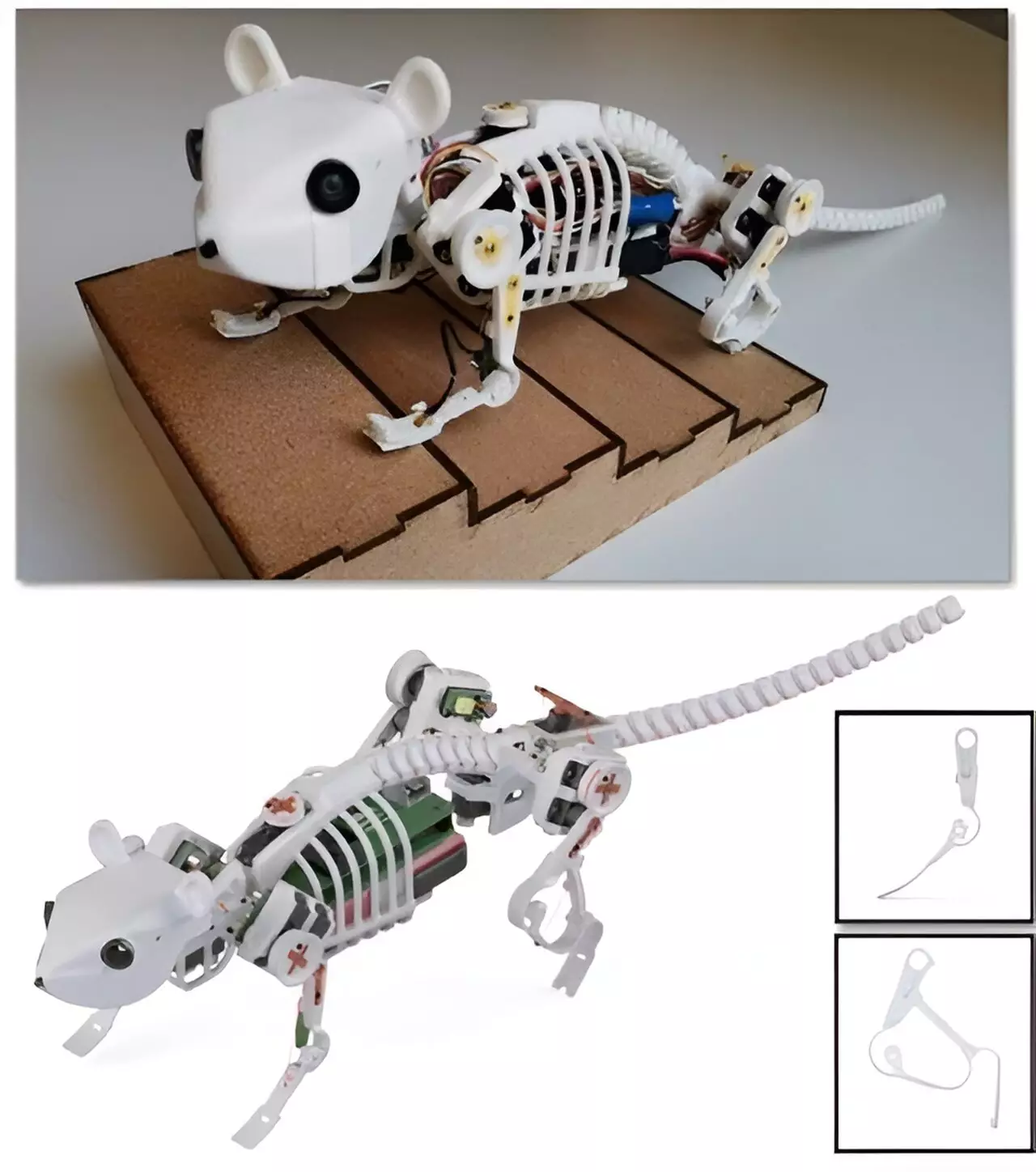Roboticists at Technical University of Munich and Sun Yat-sen University have made significant advancements in the nimbleness of quadruped robots by incorporating a flexible spine and tail. Unlike traditional four-legged robots, which have a stiff back, this new design mimics the flexibility of real animals. By reducing the complexity of the legs and introducing a spinal system, the researchers observed improved performance in various exercises such as walking, balancing, turning, and maze navigation.
Most four-legged animals, including humans, have a flexible spine that aids in balance and movement. The researchers recognized this crucial aspect and decided to incorporate it into their robot design. While previous attempts to build quadruped robots with flexible spines were deemed too complex, this study demonstrates the benefits of embracing the added complexity.
The robot developed by the research team closely resembles a mouse because of the plastic head attached to its front. However, it also has a skeletal appearance, with segmented plastic bones resembling a real mouse’s spine, along with plastic ribs and a segmented tail. It deviates from standard quadruped robots by incorporating springy prosthetic legs and feet, similar to those used by human amputees. The robot’s electronic innards are visible through the ribs, serving as power sources and controlling the leg movement through pulleys.
To assess the effectiveness of the spinal system, the researchers conducted a series of tests on the robot. These tests included walking, balancing, turning, and maze navigation exercises, which were repeated with the spinal system turned on and off. In all exercises, the robot performed significantly better when the system was activated. However, it was in maze navigation that the system truly excelled, allowing the robot to complete the course an average of 30% faster compared to when the system was turned off.
The incorporation of a flexible spine and tail in quadruped robots opens up new possibilities for their use in various industries. The enhanced nimbleness and improved performance observed in this study suggest that these robots may find applications in business, military, or even exploratory missions. Their ability to navigate complex terrains, as demonstrated in the maze exercise, could make them invaluable tools in search and rescue operations or disaster management scenarios.
The study conducted by the roboticists at Technical University of Munich and Sun Yat-sen University showcases the advantages of including a flexible spine and tail in quadruped robots. By mimicking the design of real animals, these robots exhibit improved nimbleness and performance in various tasks. With further development and refinement, these robots could revolutionize industries that rely on robots for complex maneuvers and adaptability. The potential for enhancing search and rescue operations and disaster management is particularly promising.


Leave a Reply